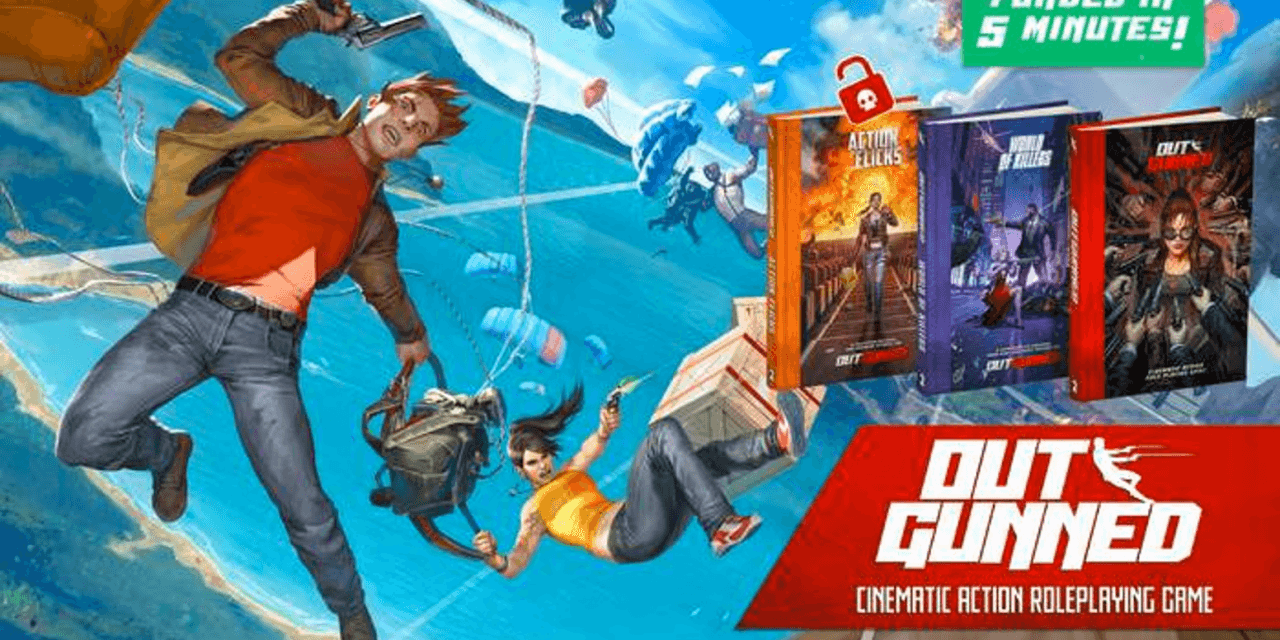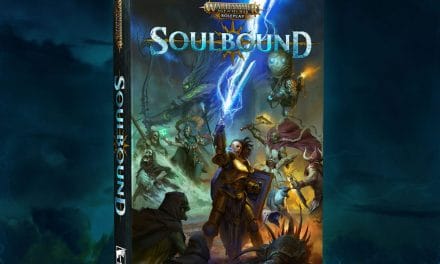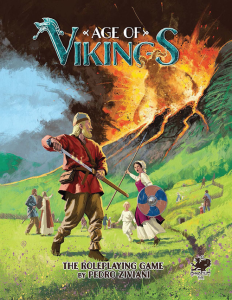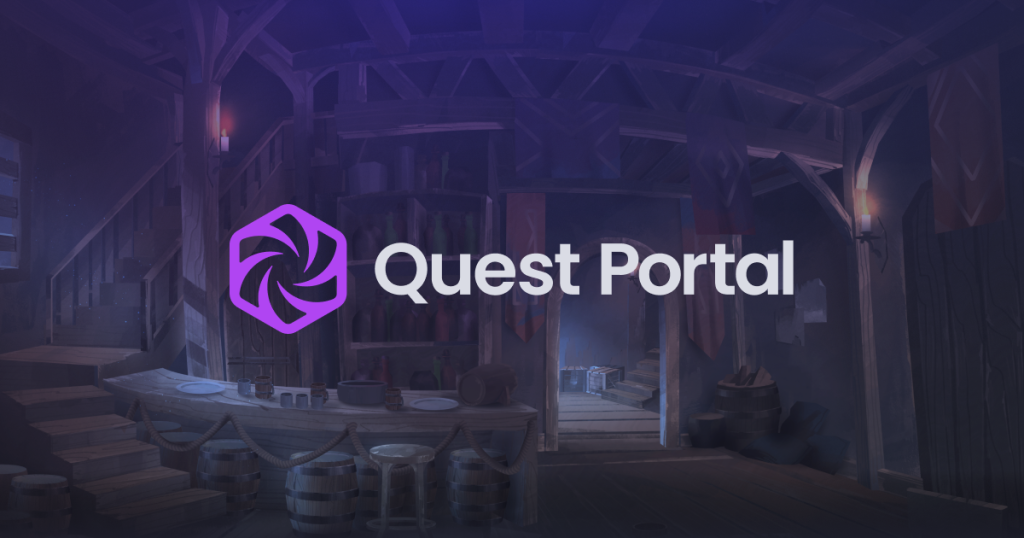Outgunned is a cinematic role-playing game that feels like an undiscovered action film from the eighties, the kind that opens with a car bursting through a market and ends with the hero walking away from a wall of fire.
A few weeks ago, a friend of mine and co-author at Yawning Portal, Helgi Már, handed me a small book with a heavy punch, saying that I must read this one. It certainly did not disappoint, for this is a game that comes with explosions, gunfights, and cheesy one-liners. So, dear reader, get in the choppah, yippi-ki-yay, and let’s get down to business! Here’s my review for Outgunned.
Created by Two Little Mice, known for Household, and now published in cooperation with Free League Publishing, it is a love letter to the high-octane films that defined a generation. Every scene carries echoes of Die Hard, John Wick, Mission Impossible, The Bourne Identity, and Lethal Weapon.
The tagline tells you everything you need to know. You are always outnumbered and always outgunned. This is not a game about tactics or meticulous resource management. It is about intensity, flair, and creative risk. The rules, art direction, and language all work together to keep the table in that heightened state of cinematic momentum. This is your chance to shine as an action hero with everything that entails.
The result is a thrilling and super-fun game. However, when the smoke clears, Outgunned also reveals the limits of its format. It shines most brightly in short stories and fades more quickly when stretched into long campaigns.
The System: The Director’s Cut
At the heart of the game lies the Director’s Cut system. Players roll pools of six-sided dice and succeed by rolling matching numbers rather than aiming for a high total. Two of a kind means a solid success, three of a kind a spectacular one, and so on.
It is an elegant design choice that captures the feel of an action sequence. The dice create tension that rises and releases like a film edit, and the results encourage players to describe what the camera would see. Each success becomes a cut in the montage of the story, a burst of motion rather than a line of arithmetic.
The rules are easy to learn and carry a natural rhythm. New players grasp them in moments, and experienced groups soon begin to speak in the language of stunts and shots rather than bonuses and penalties. The rules are just what you need for a quick game at a tournament or gaming night, easy to learn, fast, fun, and not overly complicated. Just by reading the book once, I believe I could run a game as smoothly as I run systems and games I’ve been playing for years.
A Game That Knows What It Wants
Few role-playing games are as confident in tone as Outgunned. It does not pretend to be universal or endlessly adaptable. It is designed for a single purpose: to emulate the pacing, tropes, and pulse of modern action cinema. And it does so really well.
Characters are built from a combination of Role and Trope. Each choice defines an archetype that is immediately recognizable and instantly playable. The game embraces the language of cliché, turning it into a strength rather than a weakness. After all, this game is about playing fun, exciting stories packed with action, guns, and explosions.
The layout reinforces the filmic feeling. The game master is called the Director, players are the Actors, and adventures are described as Shots. The rulebook encourages the use of flashbacks, montages, and cinematic transitions. It feels natural to cut between scenes rather than to track every footstep.
After only a few minutes of play the table begins to sound like a film crew planning a scene. That shared vocabulary transforms the experience, and it makes the story unfold with striking clarity. This is also one of the great strengths of this game, everyone knows an action film or two, making it easy for almost anyone to partake in an Outgunned narrative. You don’t need extensive cyclopedic knowledge of the setting or rules to join a Outgunned game.
What It Does Brilliantly
Cinematic Momentum
I have to say that no other recent game captures the rhythm of an action film quite like this one. The rules encourage decision and description rather than hesitation. Combat moves quickly, chases feel alive, and the tension between risk and reward is ever present.
Accessibility and Flow
Creating a character takes only minutes and is probably one of the fastest character creation process I’ve seen in a modern role-playing game. The structure of Role and Trope provides immediate identity, and the game flows almost as soon as you sit down. It is ideal for conventions, spontaneous one-shots, or short campaigns that need instant energy.
Presentation and Cohesion
The production quality is superb. Two Little Mice have crafted a book that looks and feels like it belongs on the shelf beside a stack of blu-rays. The art and typography mirror the cinematic theme without feeling forced. It is stylish, readable, and confident. Browsing through the book, you are instantly brought into the action film sphere, its troupes and cliches, and it brought a smile to my lips reading through some of the pages, since they brought to mind great scenes from movies.
Where It Falters
Although Outgunned excels at pace and clarity, it reveals its limitations when pushed beyond the short form.
The Short-Form Sweet Spot
The system works best in contained arcs: a single mission, a two-session heist, or a mini-series of five or six episodes. When a group tries to run it for months, repetition begins to creep in.
Character progression is light, and the sense of constant action can grow tiring without slower interludes. After several sessions, many characters start to resemble one another, both mechanically and narratively. The difference between the Ace and the Sleuth becomes a matter of dialogue rather than ability.
Archetypal Simplicity
The Roles and Tropes that make the game accessible also limit variety. They are intentionally broad, but over time they flatten into similar shapes. In longer campaigns two players can feel as if they are playing echoes of the same hero, both capable, both wounded, both locked into the same cinematic rhythm.
The system allows for creative storytelling, but not for much divergence in mechanical identity. The story remains engaging, yet the characters themselves seem to reach some kind of a plateau.
Narrow Emotional Range
Outgunned is designed for velocity, not reflection. It handles gunfights, explosions, and desperate escapes beautifully, but it struggles with quiet scenes or moral weight. The rules can be bent to accommodate those tones, yet the structure of play resists them. It prefers spectacle to introspection.
Replay and Longevity
Because the tone is so strong, it limits how often you can return to it. Outgunned is a special event rather than a weekly routine. It is the film festival, not the television series, so to speak.
The Verdict
Outgunned is one of the most confident and visually striking role-playing games of the last few years. It understands exactly what it wants to be and delivers on that promise with precision. The rules are fast, the style is bold, and the design philosophy is refreshingly clear.
Yet it remains a specialized tool. It is a sports car, built for bursts of brilliance, not for long travel. When used for short missions and cinematic adventures, it is exhilarating. When used for long-term storytelling, its narrow focus begins to show.
For groups who love the thrill of the chase, the spectacle of explosions, and the rhythm of quick storytelling, Outgunned is a joy. For players who crave long arcs, emotional evolution, or complex character development, it may eventually feel thin.
Still, within its chosen frame, it succeeds completely. It reminds us that role-playing games can evoke the same pulse of adrenaline and the same visual imagination as the cinema itself.
Final Rating: 4 of 5 stars












Trackbacks/Pingbacks